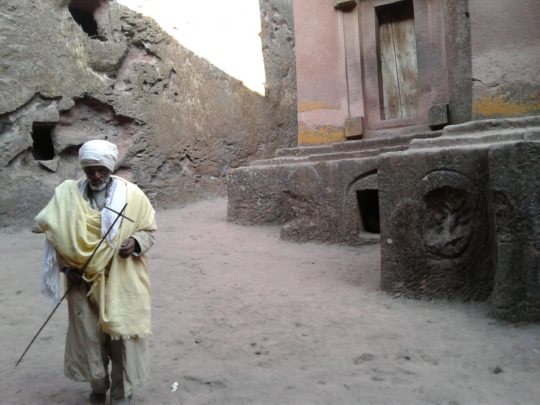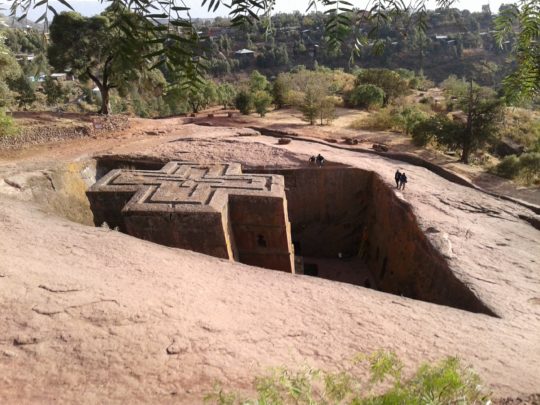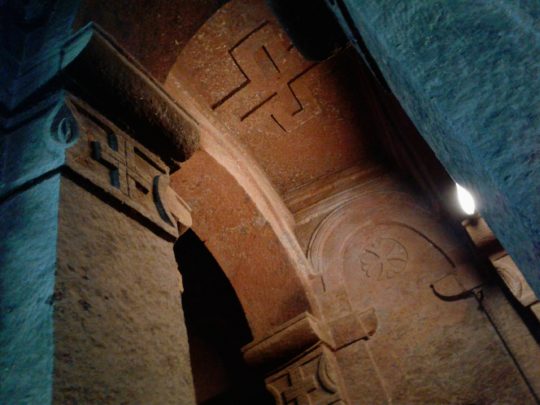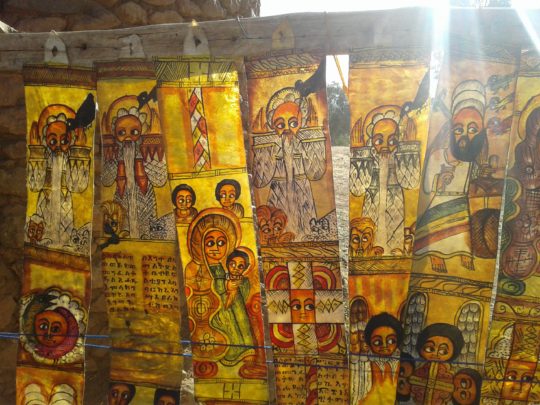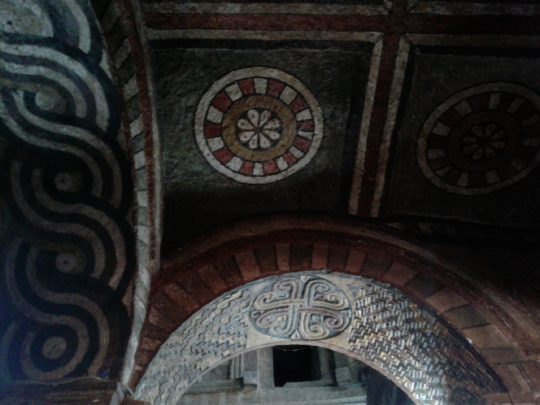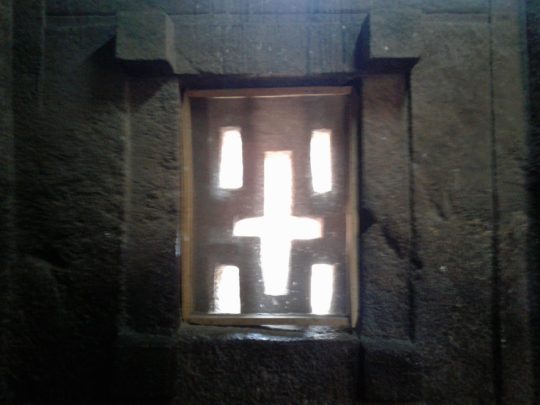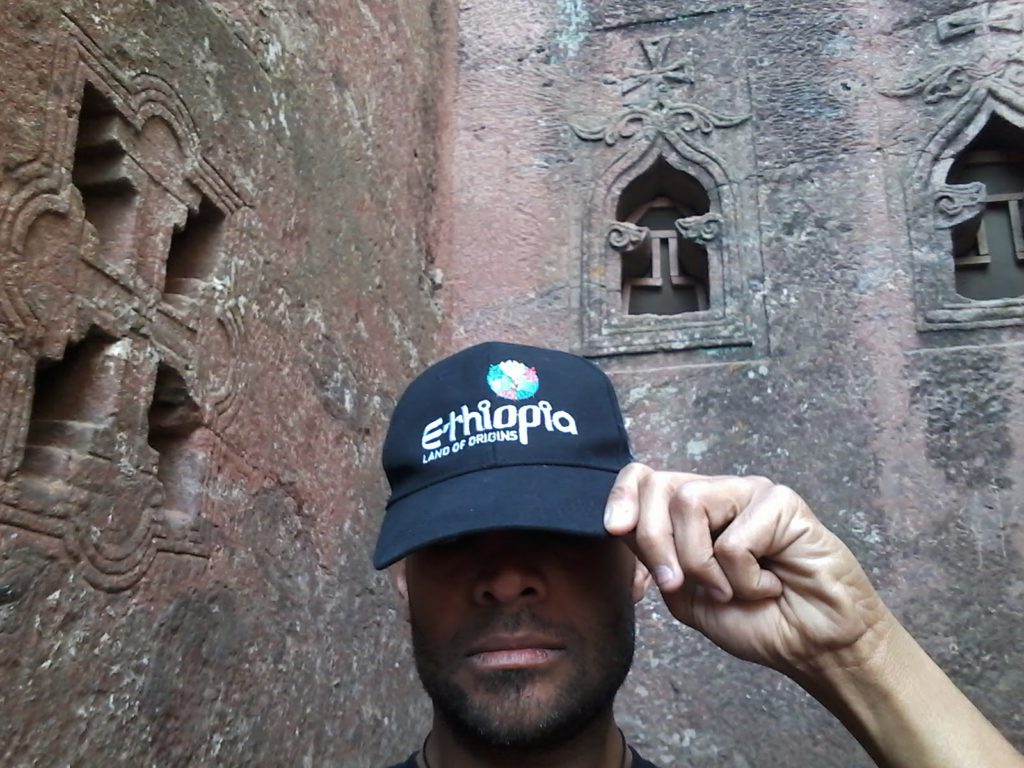“The past, the present, and the future are harmonious; they do not collide into each other, nor do they desire more than they are allowed to have. Respectfully they greet each other; respectfully they wave goodbye.” ― Matshona Dhliwayo, Lalibela’s Wise Man
In Lalibela, the past and present remain fused in stone. The town in northern Ethiopia is one of Christendom’s holiest sites, a place of pilgrimage for centuries and, thus, called New Jerusalem. Eleven churches, carved entirely from solid rock with chisel and hammer, stand today in homage to faith and passion. The churches, still operated by holy men and women and still offering peace and spiritual rest for the weary, stand dramatically in hollowed-out troughs several stories deep, so that the flattened roofs of the churches barely peek above ground level. Inside, the artfully etched windows and embellishments speak to the painstaking care―the love―with which these places of worship were created.
Guides tell the stories of pilgrims from Israel and Egypt who trekked thousands of miles, sometimes barefoot, to touch the reddish volcanic basalt of the churches, or aid in their construction. Built some 900 years ago under the reign of King Lalibela, the churches are typically cross-shaped in the medieval style of Africa’s Coptic Church, precursor to the current Ethiopian Orthodox faith. Ethiopia was one of the first nations in the world to adopt Christianity as its official religion, making the country a center for ancient Christian artifacts and culture. In fact, Ethiopia has almost 200 rock-hewn churches in addition to those at Lalibela, testifying to the strength and endurance of the people and their faith.
Declared a UNESCO World Heritage Site in 1978, the rock-hewn churches of Lalibela can be reached by air from Addis Ababa, then taxicab or private transport into the town itself. Part of the admission fee pays the salaries of the hundreds of men and women who maintain the churches and perform spiritual rites throughout the week.
Have you ever been to Lalibela?
